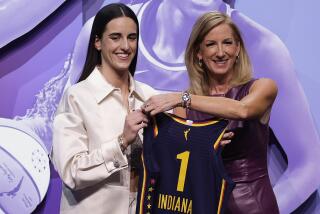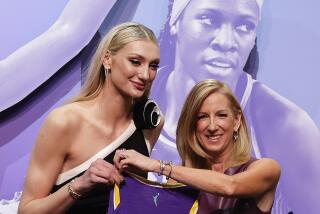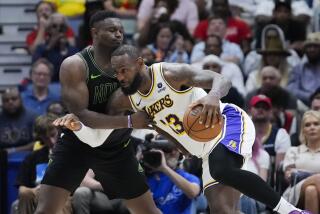The reason why race car driver Danica Patrick doesn’t drink — or eat sugar
Pro race car driver Danica Patrick is accustomed to the euphoria that comes with a triumphant spin around the track. As one of the sport’s highest-profile members, she has raced on speedways around the country, including Talladega and Daytona.
But a couple of years ago, Patrick’s post-race celebration was upended by a nauseating headache that seemed to come out of nowhere. All she could do was lay on the couch with her eyes closed; the pain persisted till the next day.
The condition was diagnosed as a migraine, making Patrick, 35, one of a reported 38 million people in the U.S. to suffer from the often-debilitating condition. Luckily, she doesn’t experience the visual disturbances that often accompany migraines.
“Most people don’t realize that migraines are different from a regular headache so it’s hard for them to have sympathy,” said Patrick, who lives in North Carolina. “Even when I first got them, I thought, ‘It’s a headache, get over it.’” (Patrick recently teamed with pain reliever Excedrin, which is rolling out virtual reality videos to underscore how the sudden onset of blurred or tunnel vision can impede a workday: The campaign addresses misunderstandings in the workplace around migraines; people assuming that their co-worker is hung over, for example, or jobs being jeopardized because of them.)
Patrick has since become attuned to what triggers migraines for her — they are different for everyone and can include stress, caffeine or alcohol, or foods that contain nitrates or MSG — and shares some of her tips here:
What has been your experience with migraines?
I’m lucky, in a way, because I’m usually at home when I get them. They happen a day after a race. One of the triggers is a rise or fall in adrenaline, and for me the common denominator was the adrenaline coming down after a race. I haven’t had one in a while because I manage the triggers.
How do you do that?
It’s hard to identify everything. Alcohol sometimes brings them on, so for me it helps to not drink at all. I used to drink beverages with artificial sugars to stay hydrated, which was a bad idea. Now I stay away from them completely.
What are your eating habits like?
I’m very into eating well. I believe food is medicine. I eat extremely clean, real foods. I like foods with one ingredient — an apple, an egg, some spinach. I don’t eat processed foods and never add sugar to anything.
What do you do to stay super fit?
I work out a lot. I have a gym at home. In addition, I do CrossFit to add in cardio and plyometric body weight movements for strength. I do yoga for flexibility and the mind, and I walk my two dogs a lot. My mantra for working out is that it should be uncomfortable. You need to sweat, even if you’re working hard for a short amount of time. If it doesn’t challenge you, it won’t change you.
And you’ve put all these tips into a new book?
It’s called “Pretty Intense” and it comes out in January next year. It’s a 360-degree perspective of health with a 12-week workout program which includes 50 recipes. I photographed the food myself. I’ve tried so many things to stay in shape and I got to this place and wanted to share it.
READ ON!
Yes, you can eat your way to beautiful skin
10 high-tech gadgets to help you get to sleep
How ‘Scandal’s’ Katie Lowes hid her psoriasis
7 steps to making your health your No. 1 priority
He lost 84 pounds in four months — and kept it off
More to Read
Get our high school sports newsletter
Prep Rally is devoted to the SoCal high school sports experience, bringing you scores, stories and a behind-the-scenes look at what makes prep sports so popular.
You may occasionally receive promotional content from the Los Angeles Times.






